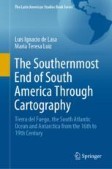Search
Search Results
-
Indigenous Rights or National Independence: Paths of Self-Determination in New Caledonia
In New Caledonia, national independence is still on the agenda, but the “Indigenous strategy” – which relates to the global Indigenous movement and...
-
Assessing indigenous community’s perspectives and attitudes toward tourism development impacts in the northwestern Himalayas, India
An assessment and monitoring of tourism impacts coupled with community perception have emerged as a vital tool for ensuring the sustainability of...

-
Siberia’s Nature and Natural Resources in the Culture of Indigenous and Russian Population
This chapter is devoted to linguistic and confessional images of Siberian landscapes that develop and exist among the indigenous Siberian and other...
-
Examining (in)justice, environmental activism and indigenous knowledge systems in the Indian film Kantara (Mystical Forest)
The acquisition of knowledge encompasses various dimensions that should be consolidated to facilitate a comprehensive and holistic advancement of its...

-
Environmental Protection and Indigenous Peoples in the Russian Arctic
The ecological factor is becoming increasingly important for the survival and continued existence of the indigenous peoples of the North, who are...
-
Strengthening Multilateral Energy Cooperation for Indigenous Resilience in the Arctic
The Arctic is a special region where the implementation of the SDGs is particularly hard due to various natural, climatic, social, economic, and...
-
Monitoring of Indigenous Law Enforcement in Evenkia, Russia
Nineteen native communities in the heart of Siberia united into the Arun Association in 1989 to guide their own destiny and sustain their traditional...
-
Where the Rivers Were: Connecting Indigenous Blue Space to Contemporary City Design
Urban blue spaceUrban blue space refers to any visible water body within a city, including manmade ponds and fountains, as well as natural...
-
Undetected non-indigenous species in the Sado estuary (Portugal), a coastal system under the pressure of multiple vectors of introduction
Research effort concerning biological invasions has increased significantly but the pressure of multiple vectors of introduction (MVI) on coastal...

-
Lifestyle Transformation of the Siberia’ Indigenous Peoples in the Soviet Period
Along with the processes of new lands annexation, the policy of Russia toward the small-numbered indigenous peoples of Siberia and the Far East was...
-
Indigenous Knowledge and Traditional Practices for Water Resource Management in Rajasthan, India
The native people of any place have been the first responders to the area's environment, precisely and carefully building the ways to sustain,...
-
Population and Urbanization
China is the most populous country in the world, with a large new population. It has 56 ethnic groups, with the Han nationality as the main body. The...
-
Regional Specific Features of the Age Structure of the Siberian Population
The dynamics of Siberia’s total population and changes in age groups by working capacity are considered. The focus is on a significant reduction in...

-
Introduction—Indigenous Presence and Current Legislation in Argentina
This chapter provides general information and background about indigenous people presence in Argentina and about the main valid laws about this...
-
Transformation of the Ethnic Population of Eastern Siberia: Post-Soviet Trends
Abstract —Using the results of the 1989 and 2010 censuses, an analysis is made of the post-Soviet transformation of the ethnic composition of the...

-
Geographical Patterns of Indigenous Religious Belief Systems in Northeast India: A Case Study
Northeast India is a mosaic of ethnicities. Though internally quite distinguishable, they have been projected as quite aggregated by the scholars of...
-
Population Geography of Bosnia and Herzegovina
According to the total number of inhabitants, Bosnia and Herzegovina belongs to the category of small countries. Accordingly, it is the 132nd country...
-
Cartographic Representations of Indigenous Territoriality
The debate on Patagonia as a useful (less) place re-created views of an inhospitable land inhabited by savages. Instead, cartography and Jesuit...
-
Significance of Indigenous Knowledge Systems in Water Conservation, Management: A Study from Sikkim Himalaya
Local knowledge systems provide a solid foundation for rural water conservation and management. Based on data acquired through a questionnaire...
-
Issues Related to Water Affecting Indigenous Peoples of North America
Water is a vital ingredient to the environment, and without it, life would not be possible. For Indigenous Peoples of North America, water does not...
